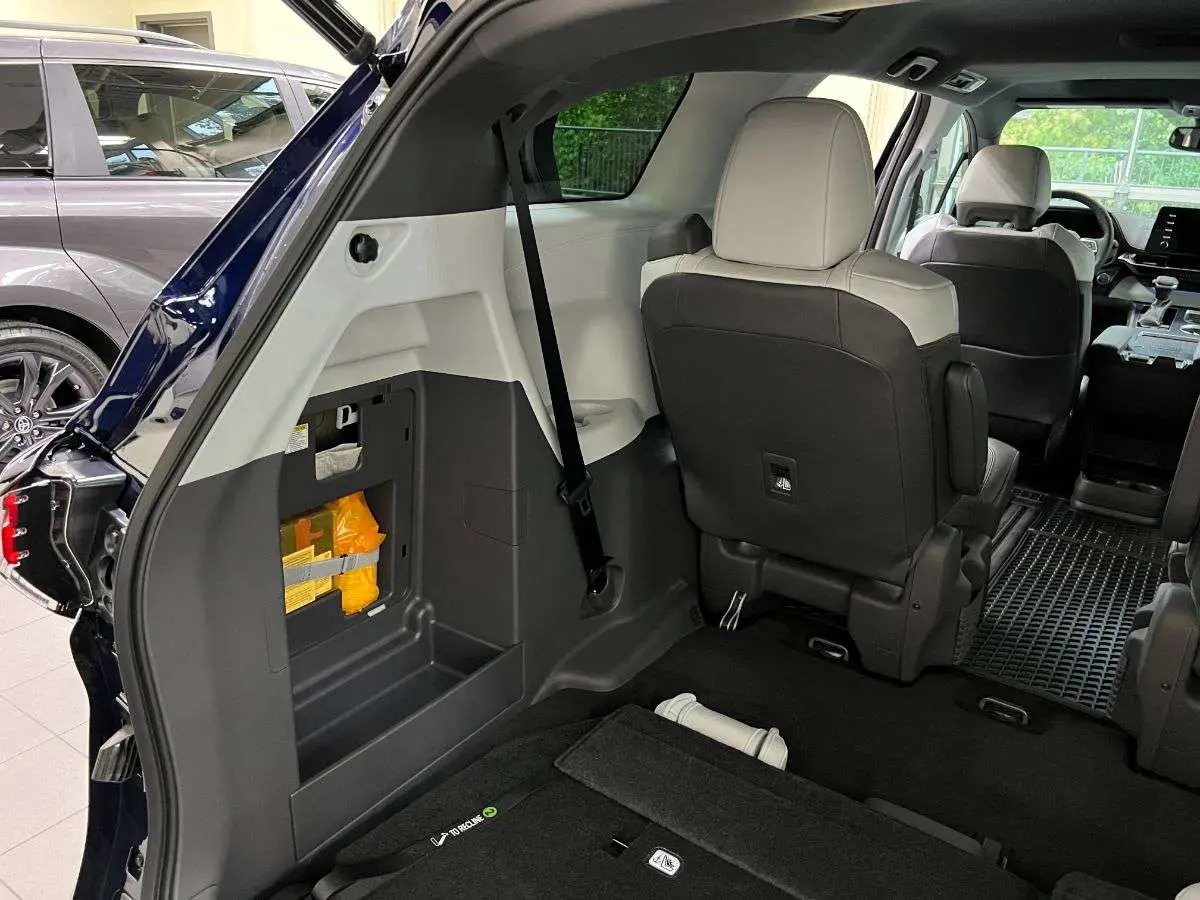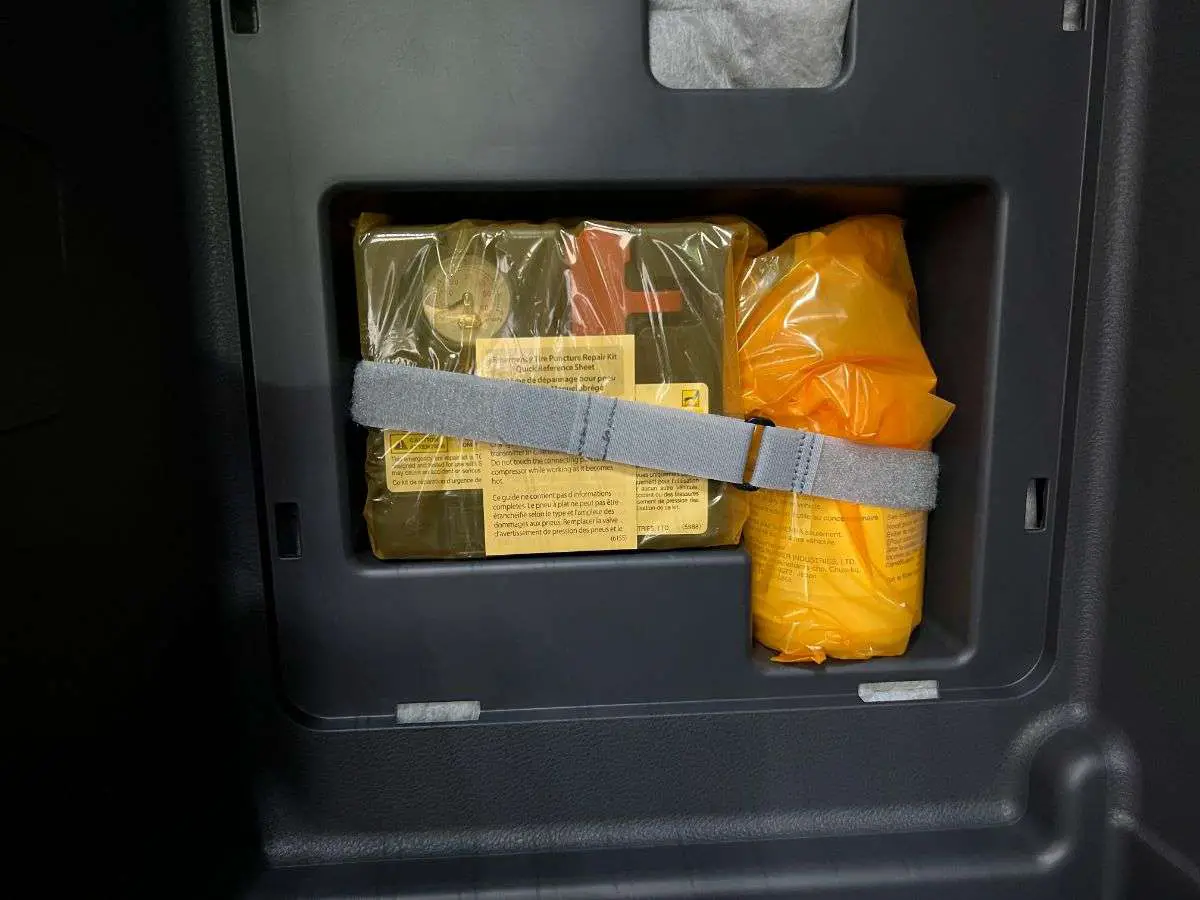Tires are one of the most important elements in keeping your vehicle running effectively and safely. But even the best tires can’t last indefinitely; sooner or later, you’ll need new ones! Tires may be damaged and require repair at any time. You should utilize a Toyota Tire Repair Kit if your tire needs to be repaired.
Although some models, such as the 2022 Sienna Hybrid LE, come with a spare tire, many manufacturers are making use of them instead since repair kits take up less space than spares. In the kit, you’ll receive an air compressor with an attached hose and a bottle of thick, sticky sealant in the bottle.
Repair kits for tires are also known as inflators or mobility kits. It’s a good idea to learn how to use your tire repair kit in order not to be caught off guard.

Benefits of the Toyota tire repair kit
The Toyota tire repair kit is great for people who don’t have the strength to change a flat tire. Breaking loose the lug nuts, removing the flat tire, and replacing it with a spare requires physical ability.
Using the Toyota tire repair kit is simple and uses less room than a spare. Spares can take up trunk space that you don’t have, especially in smaller cars with limited storage capacity.
The inflator also has an attached hose so it takes little time to fix your flat tire on the side of the road or anywhere else. It saves you time and money because there’s no need to rush to get your flat fixed at a repair shop.
Toyota tire repair kits help you avoid inconvenience and costs associated with changing a tire on the side of the road or waiting for roadside assistance. It includes everything you need to patch up your flat and get back on the road quickly.

Limitations of the tire repair kit
The Toyota tire repair kit does, however, have its limits. The Toyota Tire Repair Kit may not fix everything such as larger punctures or sidewall damage but if the problem is limited to the tread. Only if the puncture is on the tire’s tread and isn’t larger than 4 millimetres can it be used; otherwise, it won’t work.
If the tire detaches from the wheel, you can’t use the package. In that situation, you’ll need to call roadside assistance and have the car taken to a tire shop or dealer.
If the tire is too flat and you can’t get any air at all into it, then this Toyota tire repair kit won’t work either. That’s just a sign that your tire needs to be replaced as soon as possible.

How does the Tire Repair Kit work?
The Tire Repair Kit includes an air compressor and a single-use bottle of sealant. When the compressor is connected to the tire with the supplied hose, pressurized air will be pumped into the tire, drawing sealant from the bottle along the way.
The inside of the tire is coated with this sealant, which acts as a temporary patch for small punctures. The compressor may also be used on its own to adjust tire pressure without the sealant.
If the puncture is significant or on the sidewall, you’ll need to call Roadside Assistance. However, if the hole diameter is approximately 4 millimetres or less and it’s in the tread region, tire repair can be attempted.

How to use the Toyota Tire Repair Kit?
To begin, park in a safe location and inspect the tire damage. Remove the cover and detach the straps that keep it in place to pull out the repair kit from the cargo area wall. Check to see whether any sealant has expired.
Then follow these steps:

1. Remove the tire valve stem cap and extend the hose from the repair kit. Connect the air release cap to the tire valve stem, then tighten it clockwise until firm.
2. Turn off the compressor switch. Disconnect the compressor’s power connector from the vehicle’s battery and connect it to a 12-volt power source inside the car.
3. Attach the sealant bottle to the compressor. Press firmly until the locking tabs snap into place to make sure it’s connected securely.

4. Switch on the compressor after starting the car to power it up.
5. The air and sealant mixture will begin to enter the tire, so pay close attention to the pressure gauge.
6. For the first few minutes, there will be an increase in pressure as the sealant is inserted. The needle then settles back to the correct reading and begins to rise slowly.
7. When the indicated tire pressure for your car is reached, turn off the compressor. It’s best to avoid overinflating.
Be sure to do the next part too!
Disconnect the hose from the tire and the power plug from the socket once you’ve completed everything above. However, don’t put it away just yet; you’ll need it again shortly.
Begin driving for about 5 km. Do not drive faster than 80km/h. This is an important stage in ensuring that the sealant is evenly applied to the tire.
Stop the compressor in a secure location and reconnect it as before. Turn on the compressor for several seconds, then turn it off and check the gauge to see if the tire maintained the recommended pressure.
It’s fine to use the compressor a few more times if further adjustment is required, but the tire is too damaged if the gauge reads 19 psi or less.

The tire is temporarily fixed, now what?
It’s quite typical for the low tire pressure warning light to continue illuminated on your instrument panel until the sensor is changed.
The tire repair kit is designed to be used in the event of a flat. Always use caution while driving, and never drive faster than 80 kilometres per hour or farther than 100 kilometres from home. Allow your service advisor to know that you’ve utilized your tire repair kit.
If your tire is still deflated after all of this, it will need to be replaced, and a new bottle of sealant and TPMS sensor will be required.

Can the tire be used after repair?
Whether a tire can be used after repair, there are different opinions.
When the tire repair kit is used, chemicals in the seal and the tire can cause sealant material to be left behind inside the tire. Because of this, most manufacturers think the tire is trash once that sealant has been applied because they believe it can’t be efficiently cleaned to ensure that it doesn’t harm the tire.
However, there are also tire professionals who are prepared to make an effort to repair the tire. Cleaning out the sealant material, which hardens into a rubbery compound, allows the tire to be fixed if the hole is in the tread rather than the sidewall.

The sealant substance can be difficult to remove, and it’s important that it be fully removed as soon as feasible. If the sealant lacks the correct anti-corrosive compounds, it could harm the tire, wheel, or tire-pressure monitoring system.
Bear in mind that after a repair, you must purchase a new bottle of sealant since the repair kit only contains enough fluid for one application. This costs about $80 at the shop.
Conclusion
The Toyota Tire Repair Kit is a great way to keep your tires in good shape. It’s easy to use, affordable to replace, and comes with everything you need for the perfect tire repair kit. If you want peace of mind that your tires are ready when you need them most or if they just aren’t as reliable as they used to be, it might be time for new ones!


1 thought on “Toyota Tire Repair Kit: How to Use it”